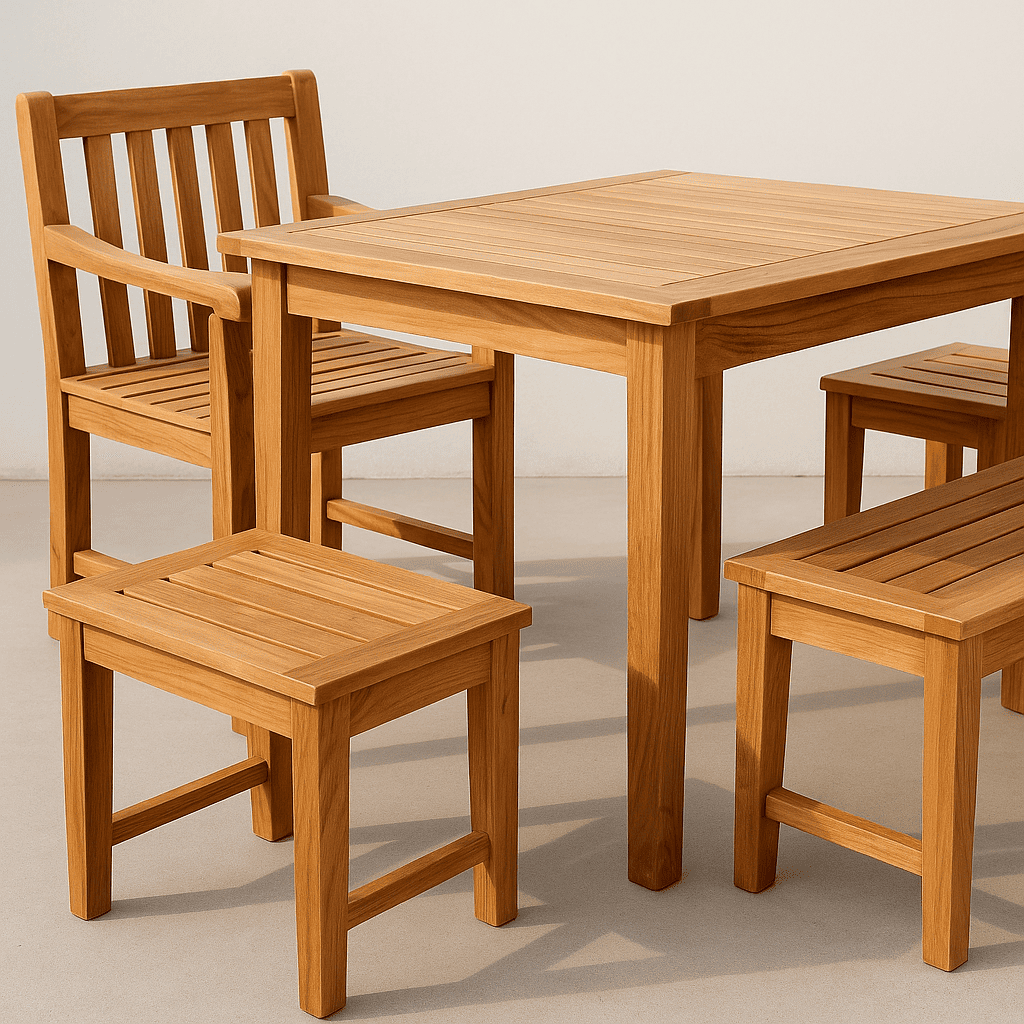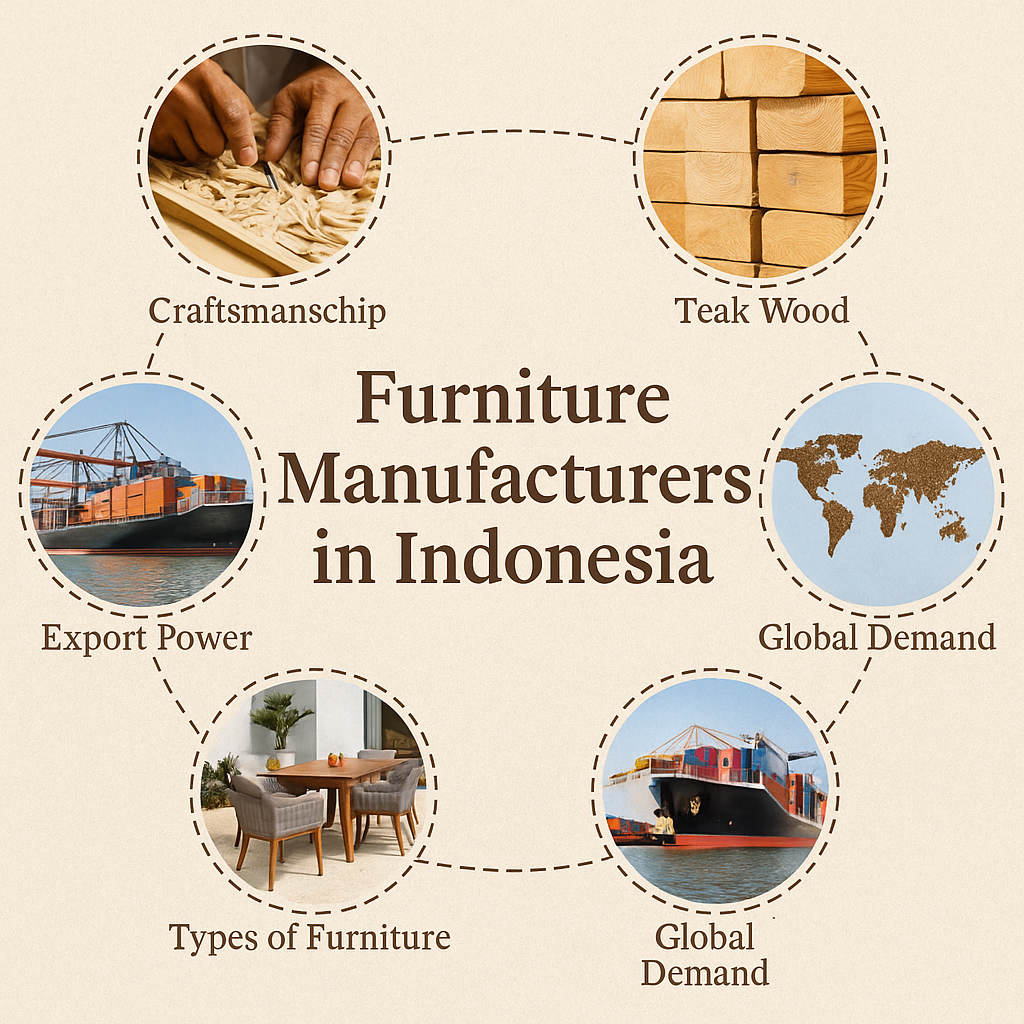Furniture Manufacturers in Indonesia: Craftsmanship, Export Power, and Global Demand
Indonesia’s furniture industry is not riding a trend—it is setting one. With centuries of woodworking tradition and a strategic export mindset, the country has earned a place at the table among the world’s largest furniture-producing nations. When global retailers look for reliable sourcing with craftsmanship, they often look to Java or Jepara. This article explores the strengths of furniture manufacturers in Indonesia, how they operate, what makes them different, and why their products continue to dominate both residential and commercial interiors across the world.
The Legacy That Shapes the Industry
Indonesia’s legacy in furniture production is carved deep in teak, mahogany, rattan, and suar wood. These aren’t buzzwords—they’re the real raw materials forming the base of most high-end, long-lasting products coming out of the country. Artisanal techniques handed down through generations still shape the industry today. You’ll see it in the hand-carved reliefs from Jepara or the tightly woven rattan forms in Cirebon. These are not factories built overnight; many of them are family-led businesses that scaled up into global suppliers while holding onto a traditional backbone.
But it’s not just about heritage. Many modern furniture manufacturers in Indonesia have streamlined their operations to match international standards. ISO certifications, legal wood certifications (SVLK), and strict environmental controls are all part of the play. Buyers looking to import in bulk or retailers trying to scale seasonal lines rely on these details. They know that every order from Indonesia carries not just style but dependability.
Why Indonesia Leads in Furniture Exports
The country sits on top of a resource-rich geography, giving it easy access to raw materials that neighboring countries struggle to source affordably. This has allowed furniture manufacturers in Indonesia to keep prices competitive without sacrificing quality. But there’s more to it than resources. The government has invested heavily in keeping the sector organized and compliant, especially in areas that affect international buyers—traceability, sustainability, and timely delivery.
Ports in Semarang, Surabaya, and Jakarta are optimized for container exports. That translates into fewer delays, smoother logistics, and better margins. Buyers from the U.S., Europe, Australia, and the Middle East rely on these supply chains to keep their warehouses stocked year-round.
What gives Indonesian furniture a serious edge, however, is its hybrid identity. It can be both artisanal and mass-produced, rustic and polished, tailored and off-the-shelf. This flexibility allows manufacturers to meet the needs of boutique design studios and big-box retail brands alike.
Related – Durable Outdoor Furniture: A Smart Investment That Lasts Through Every Season
Teak Wood: The Cornerstone of Quality
No discussion about furniture manufacturers in Indonesia is complete without mentioning teak. Grown sustainably in managed plantations across Java, teak remains one of the country’s strongest value propositions. Its dense grain, natural oils, and termite resistance make it a top-tier choice for both indoor and outdoor settings.
Manufacturers do more than cut and shape teak. They kiln-dry it, grade it, and finish it in ways that enhance both longevity and appeal. Unlike many low-cost exporters who use composite wood or veneers, Indonesia works with the real thing. That matters—especially to architects, designers, and luxury property developers.
Even brands that operate globally source their premium outdoor lines from Indonesian factories. The combination of solid joinery, skilled hands, and a deep understanding of teak’s behavior through seasons makes Indonesian furniture stand out even after years of use.

What Buyers Should Know Before Choosing a Manufacturer
Sourcing furniture from Indonesia involves more than finding a beautiful product photo. Here’s what professional buyers and business owners should take into account when working with manufacturers:
Legal Wood Certification (SVLK): Mandatory for exports. It assures that timber used is sustainably harvested.
MOQs and Lead Times: Manufacturers often require a minimum order quantity (MOQ). Lead times vary but typically range from 30–90 days depending on the volume and finish.
Customization Capabilities: Many furniture manufacturers in Indonesia offer full customization. This includes finish, upholstery, dimensions, and even branding.
Freight and Shipping: CIF and FOB are common. Clarify shipping terms early in the conversation.
Factory Visits and Trade Shows: Visiting during IFEX (Indonesia International Furniture Expo) can be a great way to meet multiple vendors in one trip.
Choosing the right manufacturer involves communication, clarity, and understanding their production cycle. When those align, the partnership tends to last.
Types of Furniture Indonesia Excels At
From hospitality contracts to home decor lines, Indonesian manufacturers cater to diverse segments. Here are the key categories where they outperform:
Outdoor Teak Furniture: Chairs, loungers, and dining sets built to last through extreme climates.
Rattan and Wicker Furniture: Both traditional handwoven and synthetic versions for tropical-style interiors.
Solid Wood Dining Sets: Mahogany, teak, suar, and acacia wood tables often serve as statement pieces in luxury villas.
Custom Commercial Furniture: Restaurants, boutique hotels, and even coworking spaces across the globe use Indonesian-made furniture.
Eco-Friendly Furniture Lines: Manufacturers increasingly experiment with recycled wood, bamboo, and water-based finishes.
Each of these categories reflects Indonesia’s strength—not just in aesthetics but in build quality, export consistency, and customer support.
Comparing Indonesia With Other Manufacturing Hubs
Global buyers often compare Indonesian furniture manufacturers with those in China, Vietnam, or India. While each market has strengths, Indonesia holds a unique middle ground. Here’s how:
China offers scale but often loses on uniqueness and raw material authenticity.
Vietnam has emerged as a mass exporter but is still growing its luxury craftsmanship scene.
India has strong artistry but struggles with consistency and regulatory compliance.
Indonesia, in contrast, merges traditional design with modern capacity. Its manufacturers operate legally, competitively, and sustainably—often under long-term partnerships with global buyers.
How Global Brands Collaborate With Indonesian Manufacturers
It is common for global home decor or outdoor brands to white-label products from furniture manufacturers in Indonesia. These brands usually provide the initial design, branding specs, and guidelines, while the Indonesian factory handles raw materials, production, and finishing.
Some manufacturers have their own in-house designers, allowing them to pitch ready-made collections that brands can adopt or modify. These collaborations often extend to packaging, labeling, and even global distribution.
Thanks to its deep bench of skilled artisans, production managers, and QC teams, Indonesia has become more than a supplier. It’s a full-scale production partner that helps build global furniture brands from the ground up.
Risks to Watch Out For
As with any international sourcing, not everything is smooth. Delays can happen. Monsoon seasons can affect drying cycles for wood. Power disruptions in rural workshops can extend production timelines. And sometimes, miscommunication on specs leads to output mismatches.
However, the most reliable furniture manufacturers in Indonesia have learned how to prevent these issues. They offer digital order tracking, in-house quality control teams, and bilingual sales managers who keep the process moving.
First-time buyers should work through verified directories or attend trade shows where manufacturers showcase certifications and past collaborations. Long-term relationships, transparency, and clear contracts go a long way toward minimizing risk.
Final Thoughts
When durability, craftsmanship, and sustainability come together, you find yourself looking at Indonesian-made furniture. The manufacturers here know the global market, and they work hard to retain their edge—through better designs, tighter QC, and constant adaptation. If you’re sourcing furniture that reflects value beyond the price tag, it’s time to consider what Indonesia brings to the table. Quite literally.
To help streamline your sourcing journey, we’ve created a furniture sourcing checklist specifically for buyers working with manufacturers in Indonesia. This downloadable guide breaks down each critical step—from verifying certifications and planning logistics to managing communication and quality control. Whether you’re a first-time buyer or scaling your next seasonal collection, this checklist helps you stay organized, ask the right questions, and avoid costly oversights. Use it as your go-to document before placing orders or visiting a factory.
Click here to download the complete checklist for free– Branded_Furniture_Sourcing_Checklist_Indonesia and take the guesswork out of sourcing.
Looking for reliable furniture manufacturers in Indonesia?
Whether you’re sourcing for retail, commercial use, or white-labeling a new collection—reach out to explore our collection trusted by global buyers. Let Indonesia’s craftsmanship power your next collection. Our team works directly with certified factories across Java, Jepara, and Cirebon, ensuring you get quality, compliance, and consistent supply. Have a specific project in mind? We’re ready to help you find the right manufacturer, offer tailored recommendations, and support your procurement journey from start to shipment. Contact us today to get started.

